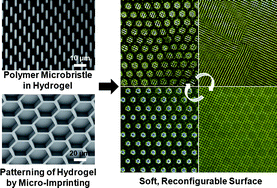Abstract
We report on the fabrication of biologically-inspired “smart” surfaces using hybrid architectures comprising

- This article is part of the themed collections: Emerging themes in soft matter: responsive and active soft materials and Soft Matter Lectureship Winners

 Please wait while we load your content...
Please wait while we load your content...